The formation of a dipole is due to two equal and dissimilar point charges placed at a
short distance
long distance
above each other
None of these
The correct Answer is:A
Step by step video, text & image solution for The formation of a dipole is due to two equal and dissimilar point charges placed at a by Physics experts to help you in doubts & scoring excellent marks in Class 12 exams.
Updated on:21/07/2023Similar Questions
Knowledge Check
What is the dipole moment of a dipole consisting two equal and opposite charges, each of 2 C seperated by 0.04 m:
A6×10−8 cmB1.5×102cmC8×10−6 cmD8×10−2 cmWe have two electric dipoles. Each dipole consists of two equal and opposite point charges at the ends of an insulating rod of length d. The dipoles sit along the x-axis a distance r aparts oriented as shown in fig. Their separation rgtgtd. The dipole on the left:
 Awill feel a force to the leftBwill feel a force to the rightCwiff feel a torque trying to make it rotate counterclockwiseDwill feel no torque
Awill feel a force to the leftBwill feel a force to the rightCwiff feel a torque trying to make it rotate counterclockwiseDwill feel no torqueAn electric dipole consists of two equal and opposite charges placed 2cm apart. When the dipole is placed in a uniform electric field of strength 105NC−1, it experiences a maximum torque of 0.2×10−3Nm. Find the magnitude of each charge
A20μmB10μCC15μCD40μC
A short dipole is placed along the x - axis at x=x (Fig. 3.120).
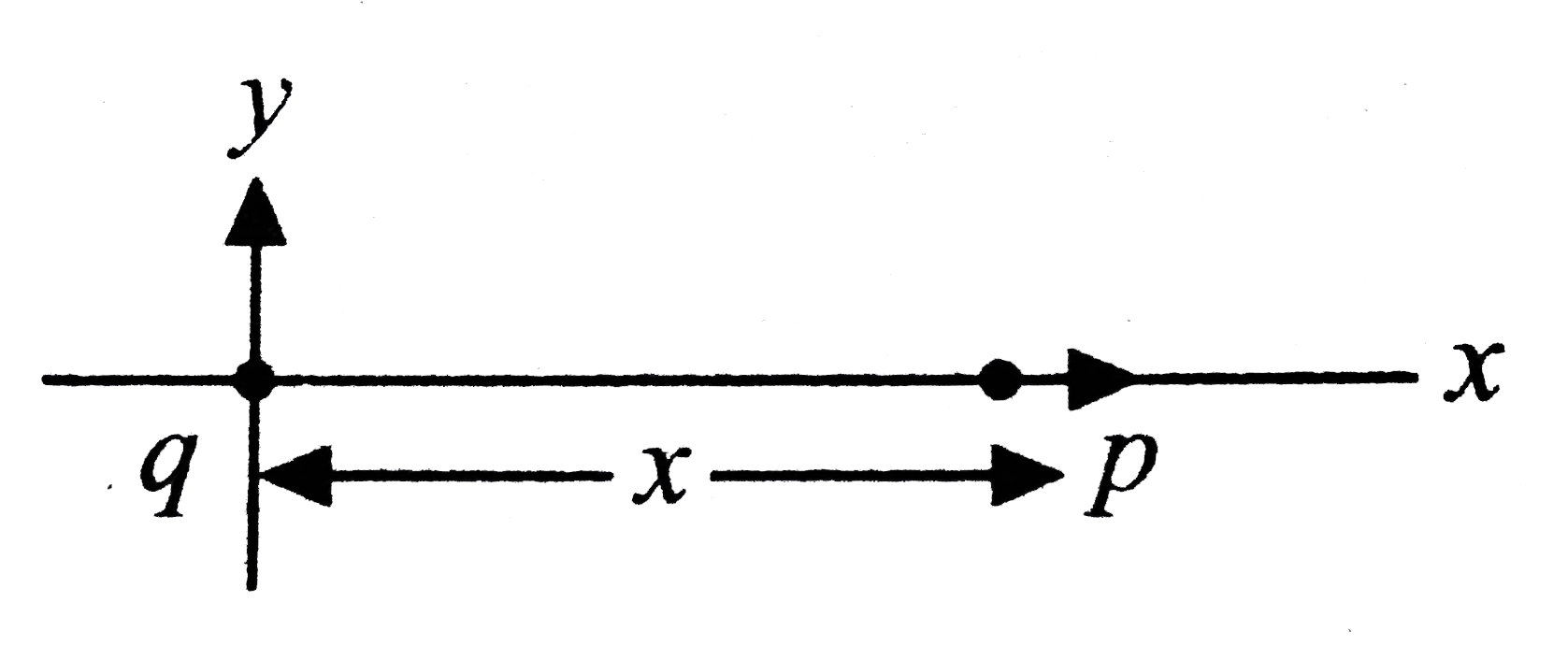 .
.
a. Find the force acting on the dipole due to a point charge q placed at the origin.
b. Find the force on the dipole if the dipole is rotated by 180∘ about the z- axis.
c. Find the force on dipole if the dipole is rotated by 90∘ anticlockwise about z - axis, i.e., it becomes parallel to the y - axis.
View SolutionDraw electric field lines for charge distributions given below– (a) Two equal point charges placed at a separation. (b) Two point charges 2q and – q placed at a separation. Describe qualitatively how the lines will appear at a very large distance from the two charges? (c) Three point charges, each equal to + q placed at the vertices of an equilateral triangle.
View SolutionAn electric dipole is the combination of two equal and opposite charges q and -q, respectively, separated by distance 2a. There are different points where we can find electric field due to the electric dipole. In the given table, column 1 shows different positions of point where we have to find electric field due to dipole, column 2 shows the figure of dipole with different positions of point where we have to find the electric field and column 3 shows the value or final formula of the electric field of different positions of the point.
When point P lies on the equatorial plan of the electric dipole, electric field due to -q is ?
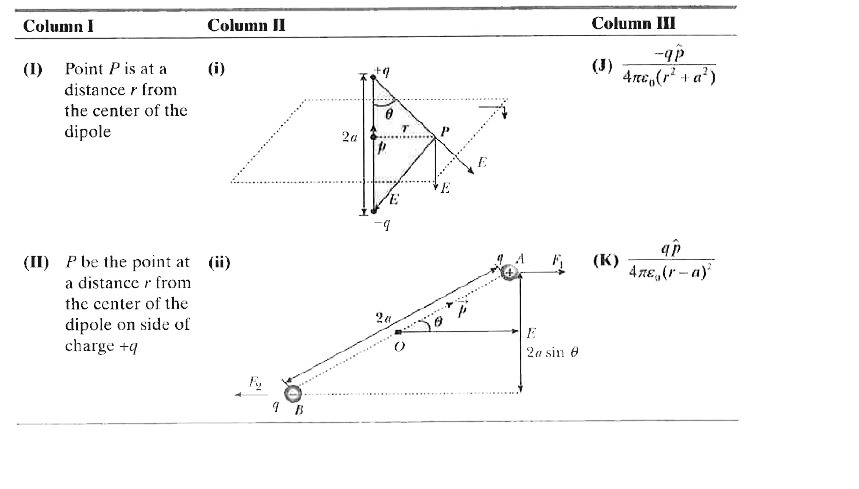
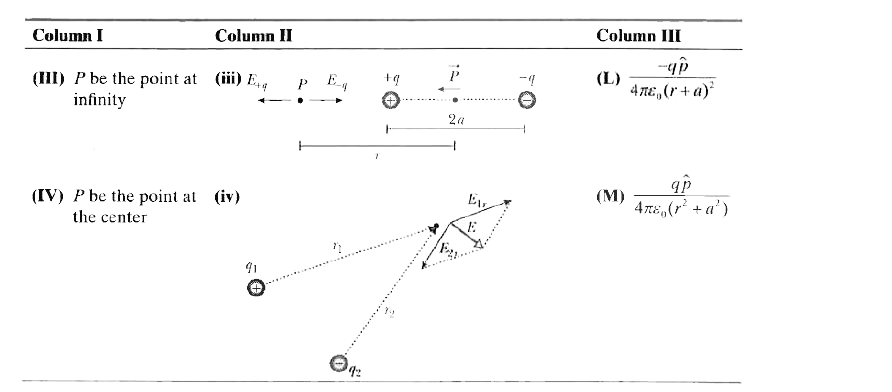
View SolutionAn electric dipole is the combination of two equal and opposite charges q and -q, respectively, separated by distance 2a. There are different points where we can find electric field due to the electric dipole. In the given table, column 1 shows different positions of point where we have to find electric field due to dipole, column 2 shows the figure of dipole with different positions of point where we have to find the electric field and column 3 shows the value or final formula of the electric field of different positions of the point.
when point P lies on the equatorial plane of the electric dipole, electric field due to +q is ?
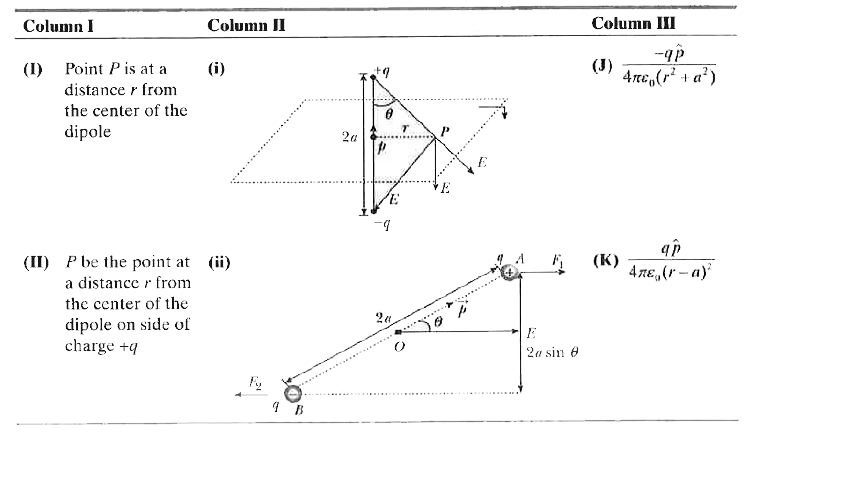
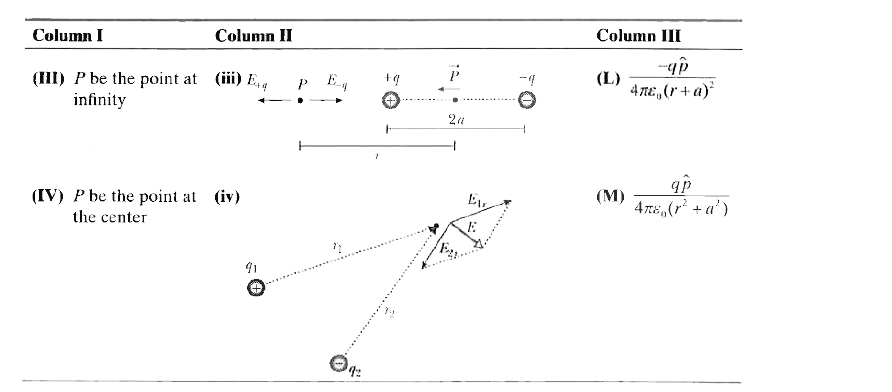
View SolutionAn electric dipole is the combination of two equal and opposite charges q and -q, respectively, separated by distance 2a. There are different points where we can find electric field due to the electric dipole. In the given table, column 1 shows different positions of point where we have to find electric field due to dipole, column 2 shows the figure of dipole with different positions of point where we have to find the electric field and column 3 shows the value or final formula of the electric field of different positions of the point.
When point P lies on the axis of the electric dipole, electric field due to -q is ?

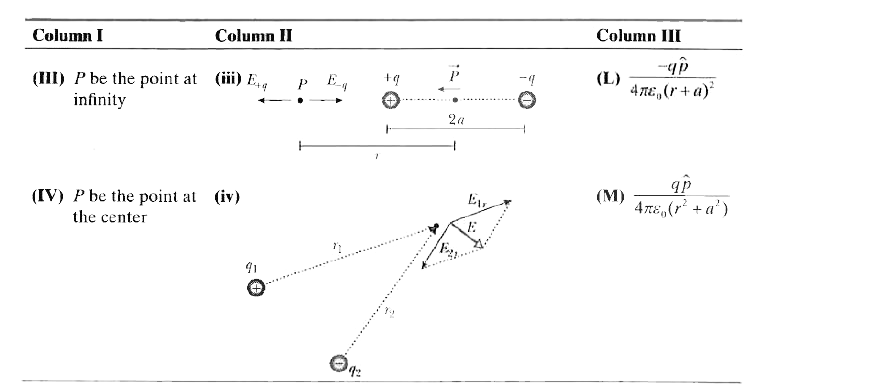
View Solution
